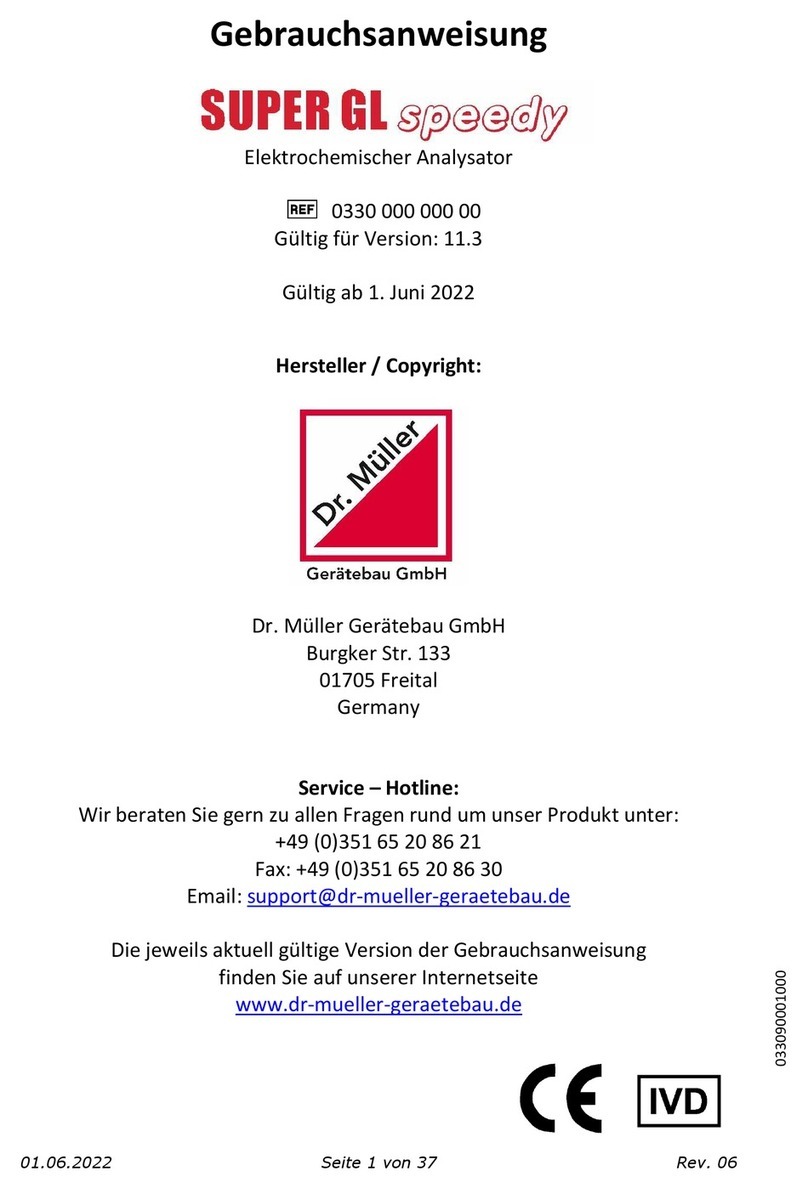Safety
20.08.2012 Page 10 of 42 Rev. 04
2 Safety
2.1 Introduction
The following chapters deal with the safety of people working on the equipment.
Please read these chapters carefully BEFORE operating the equipment as they
contain the general safety instructions and information on the personal protection
of people working on the equipment and also on the protection of the equipment.
The installation of the following safety instructions
does not release the equipment user from the duty
to observe other relevant safety measures which
apply to all equipment.
2.2 Responsibility / Training of user
- The SUPER GL easy / easy+ provides measured values for the diagnosis
and treatment of diabetes.
- Use for personal use is expressly forbidden.
- An introduction to the correct use of the equipment can be given by a
member of staff from the manufacturer or authorised sales partner in
agreement with the persons working on the equipment.
- Each user is responsible for observing the safety, health and legal
regulations and for using the equipment in the proper manner only.
- Evaluation of the results and the diagnostic and therapeutic measures
derived from them must be carried out only by specialist staff authorised to
do so.
2.3 General safety instructions
- Before use of the equipment, please read all the instructions for use –
carefully, especially the regulations on taking samples –.The manufacturer’s
staff or the authorised sales company are available to answer any
questions.
- All persons working on the equipment must be made aware of the relevant
safety regulations before use and these must be kept ready to hand at all
times.
- Please note all the general safety regulations for your area of application,
such as the wearing of protective gloves and the relevant disinfection and
hygiene regulations.
- If there is any accidental skin contact with potentially infectious substances,
e.g. human samples, disinfect the affected parts of the body with a suitable
disinfectant solution.
- The haemolysis system solution is not corrosive, poisonous or seriously
harmful to skin. If there is any skin contact with the haemolysis system
solution or the calibration solution, rinsing with water is sufficient. You can
find more information on this in the safety data sheet for each solution.




























